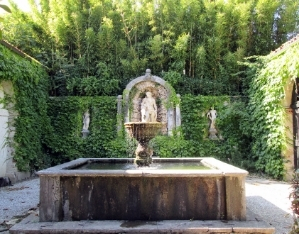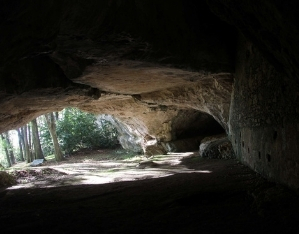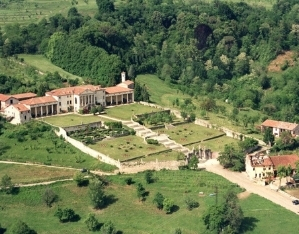This villa combines the allure of Palladian architecture with the remarkable landscaping appeal of a 19th-century, romantic-style garden, enhanced by a significant panoramic position looking out over the Astico river valley.
The complex occupies a hilltop plateau above the town of Lonedo. The entrance to the villa is located outside the small church of San Gerolamo, an older building that dates back to 1496, erected along an ancient shepherds’ track. Consisting of a central body and two porticoed “barchesse” barns, the villa was formerly attributed to Palladio, but was more likely built in the great architect’s style for the Piovene family in 1587. During the first half of the 18th century, Francesco Muttoni commissioned the “barchesse”, the double stairway leading to the main floor of the villa, the wonderful entrance gate with its elaborate wrought ironwork, and the monumental staircase leading up to the villa, which features a series of statues carved at Orazio Marinali’s workshop. The ascent to the villa symmetrically divides the formal gardens, which are arranged as terraces. The first terrace is planted as a lawn, the second as a boxwood parterre, featuring traces of former greenhouses, palms and bushes; the third is characterized by two four-lobed fountains. A large English-style park, designed by Antonio Piovene in the early 19th century, extends beyond the road along an avenue of majestic lime trees, running all the way to the 19th-century garden among grassy glades and centuries-old trees, including horse chestnuts, beech trees, and large cedars of Lebanon. The rocky slope is studded with karst ravines and caves, including one small cave which contains memorial tablets to family members.




